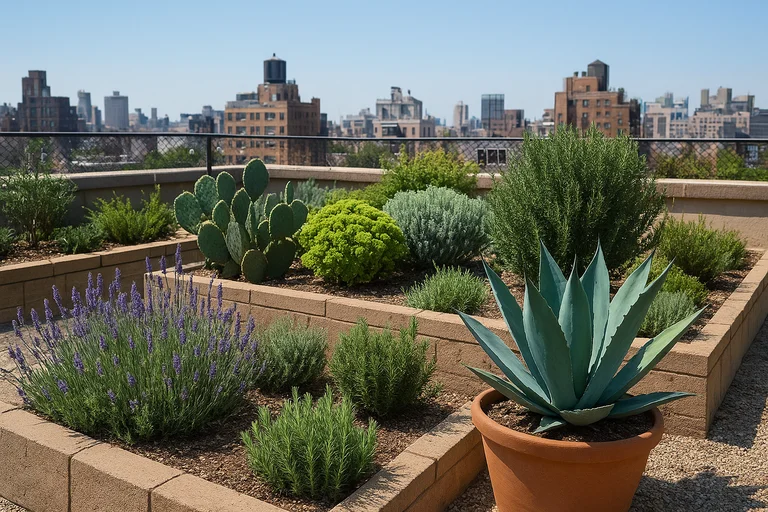Low Water Plants For Rooftop Gardens In Dry Climates
As global temperatures rise and rainfall patterns change, more people are turning to rooftop gardens to add greenery to urban spaces. But in dry climates, where water is scarce and the sun is relentless, growing plants can feel impossible. The solution lies in choosing low-water plants for the rooftop that grow with minimal moisture while keeping your garden vibrant and full of life.
Whether you live in the American Southwest, the Mediterranean coast, or Australia’s sun-baked cities, these drought-tolerant plants can transform your rooftop into a cool, relaxing oasis.
Why Dry Climates Need Smart Plant Choices
Rooftop gardens in dry regions face some tough challenges—constant sunlight, heat bouncing off nearby surfaces, and shallow soil that loses moisture fast. Most traditional plants can’t handle these harsh conditions, but low-water species are made to survive. They hold moisture in their leaves, grow deep roots, and easily adapt to extreme heat.
By selecting water-wise plants, you’ll:
- Cut down on water use and maintenance costs.
- Keep your rooftop cooler and boost energy efficiency.
- Attract pollinators and support local biodiversity.
- Build a climate-resilient green space right in the heart of your city.
10 Best Low-Water Plants for Rooftop Gardens in Dry Climates
Here are 10 of the best low-water plants for a rooftop garden.
1. Sedum (Stonecrop)

Sedums are among the most popular rooftop plants worldwide. Their fleshy leaves store water, allowing them to survive intense sunlight and long dry periods.
They come in many varieties, offering color from green to pink to red tones—ideal for living green roofs or container gardens.
Tip: Combine different sedum varieties to add rich texture and a mix of vibrant colors to your rooftop garden.
2. Lavender
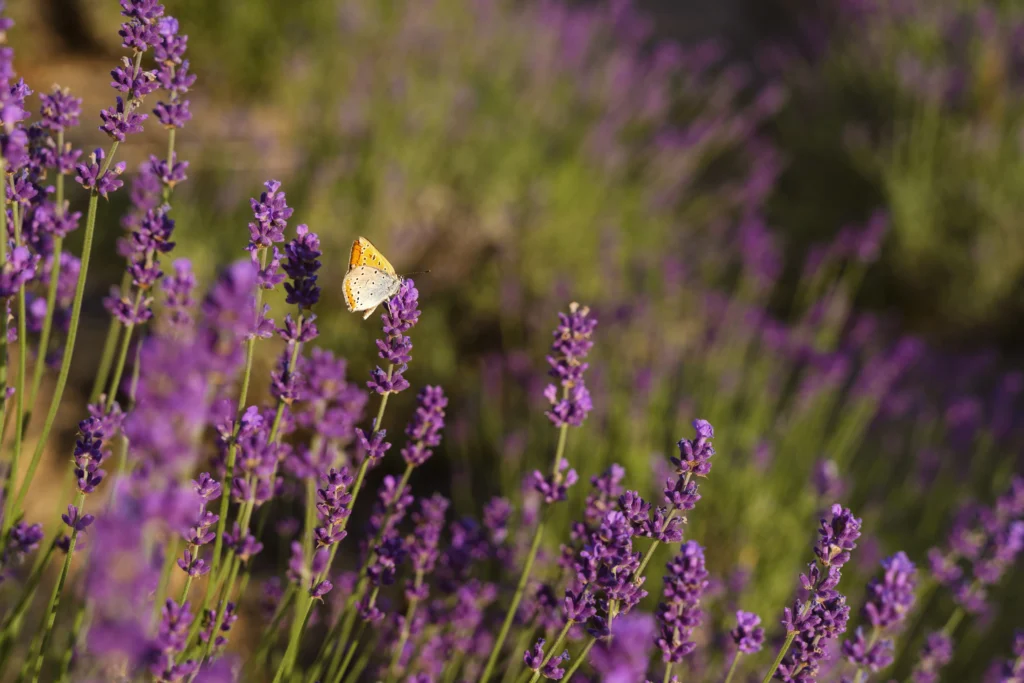
Lavender not only survives heat but also fills the air with a calming fragrance. It thrives in poor, dry soil and full sun—making it an ideal rooftop companion. Its deep roots stabilize the soil while attracting pollinators like bees and butterflies.
Best suited for: Mediterranean and Southwestern U.S. rooftops.
3. Aloe Vera
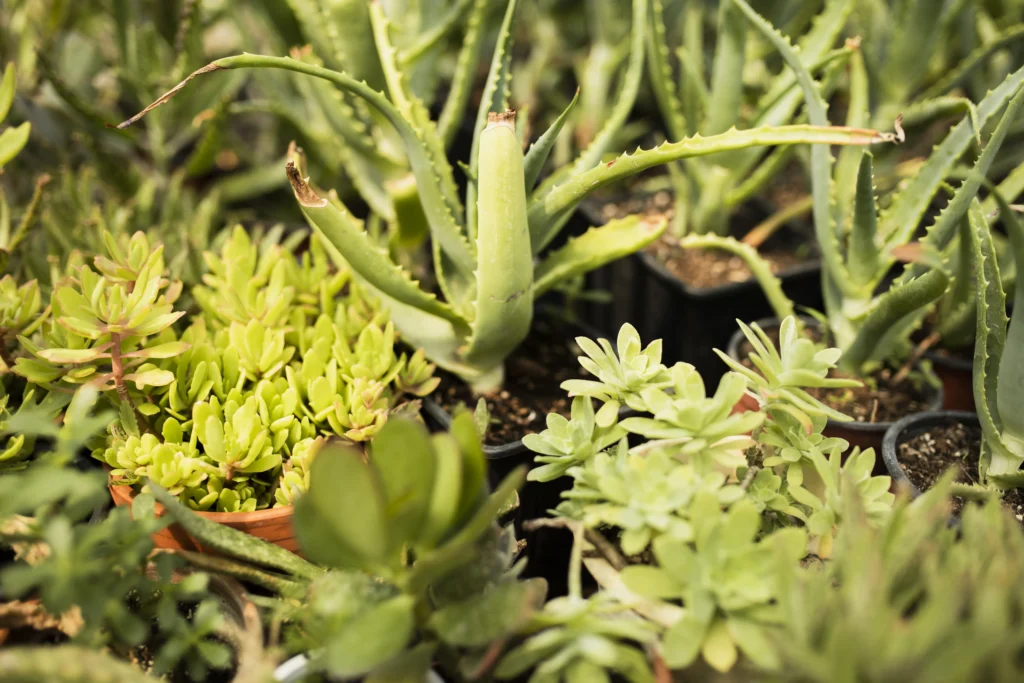
Aloe vera is one of the most reliable low-water rooftop plants for dry climates. Its thick leaves store water, helping it survive long dry periods with minimal care. This hardy succulent thrives under full sun and adds a clean, modern look to rooftop spaces. Plus, its soothing gel offers a natural bonus for minor skin care and burns.
4. Rosemary
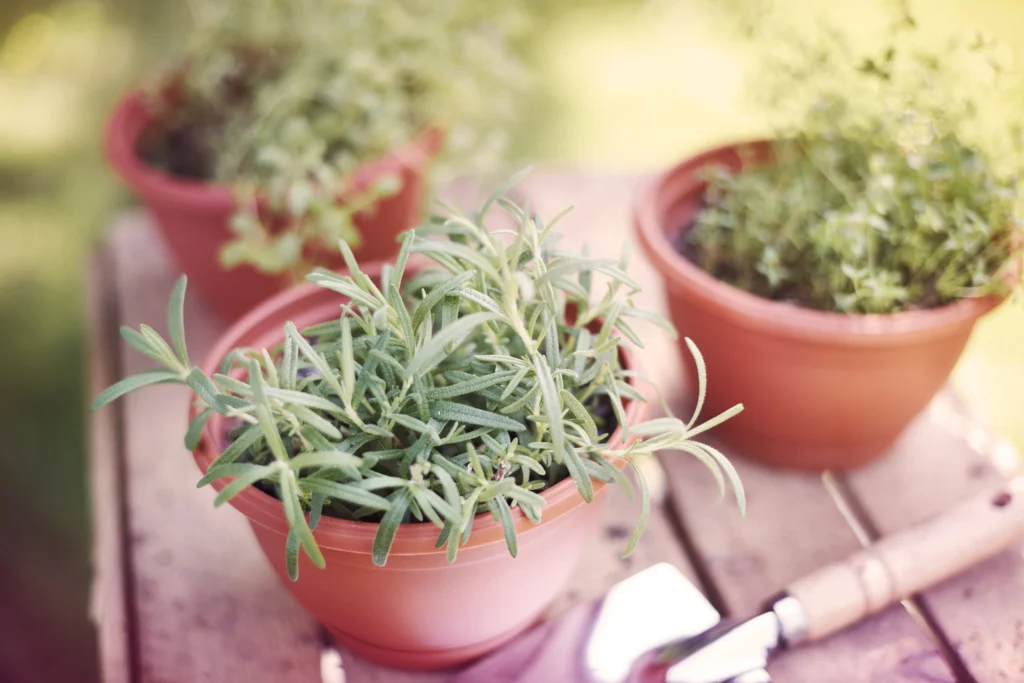
Lantana is a vibrant, sun-loving plant that flourishes even in the driest rooftop gardens. Its bright clusters of flowers attract butterflies and bring a burst of color all summer long. Once established, it needs very little water, making it an ideal choice for easy, low-maintenance green spaces.
5. Coneflower (Echinacea)
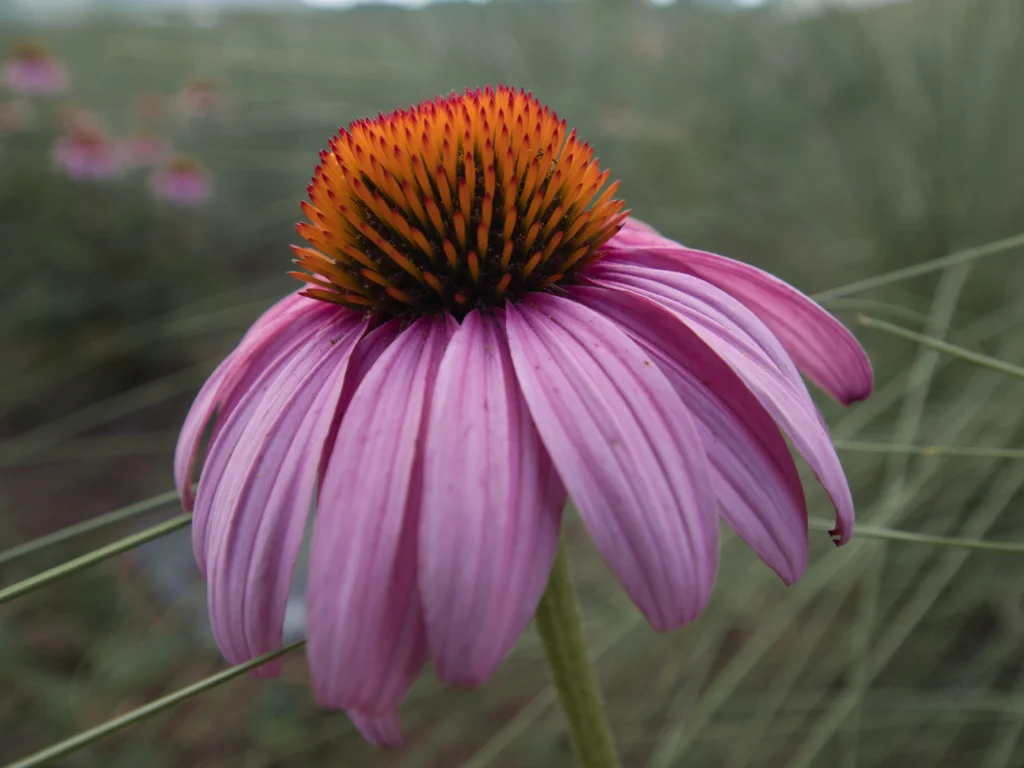
Coneflower adds both beauty and strength to dry rooftop gardens. It thrives in heat and drought, producing bright, daisy-like blooms that attract pollinators. Pair it with other low-water rooftop plants for a colorful, lively garden that stays vibrant all summer long.
6. Agapanthus
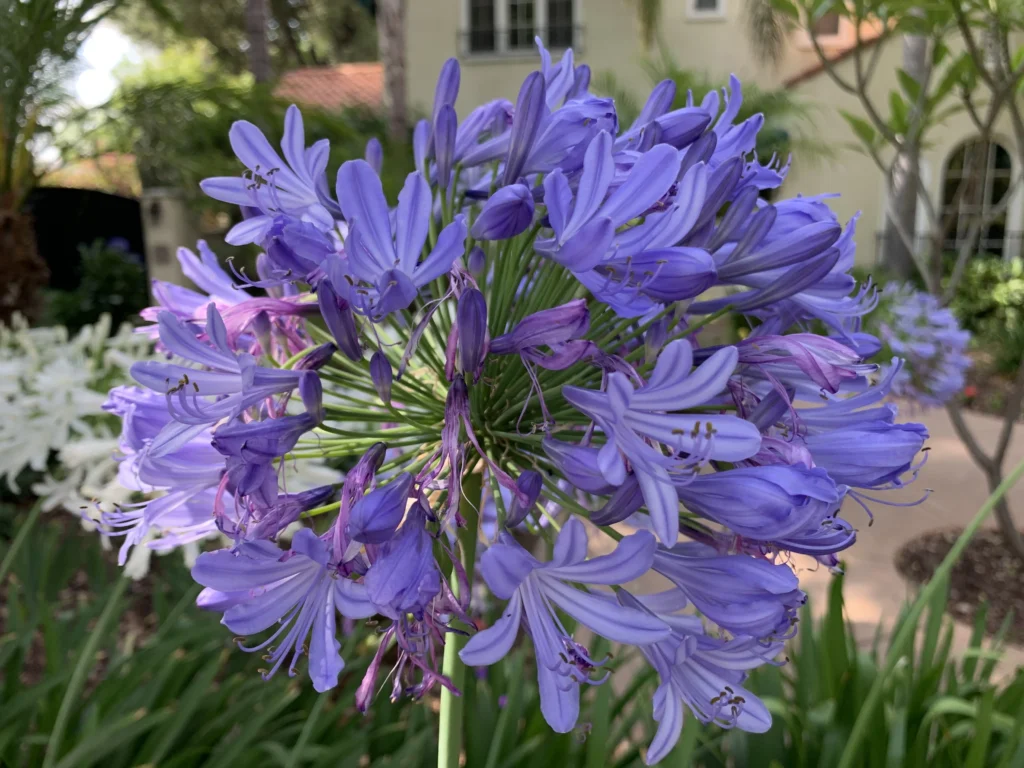
Lily of the Nile, or Agapanthus, is perfect for dry rooftop gardens that require toughness and elegance. It produces eye-catching blue or white blooms and can withstand heat and poor soil conditions. Its lush leaves give it life and volume without requiring a lot of watering.
7. Lantana
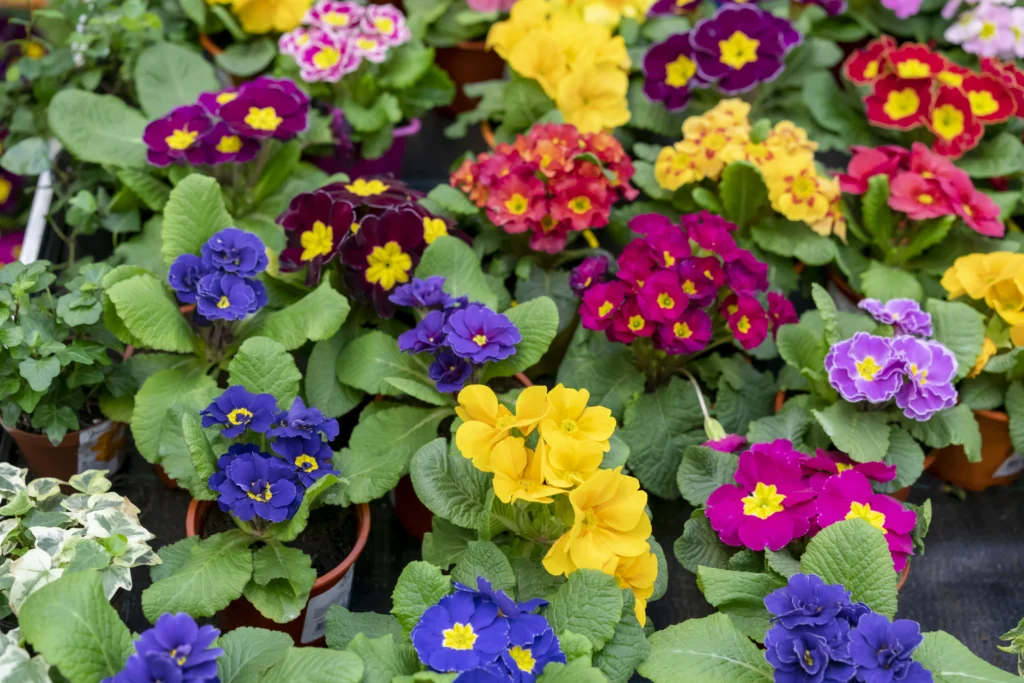
Lantana is a lively, sun-loving plant that thrives even in the driest rooftop gardens. Its bright flower clusters attract butterflies and add a splash of color throughout the summer. Once established, it requires minimal water, making it perfect for low-maintenance, hassle-free green spaces.

Thyme grows easily on sunny rooftops and is a small but potent herb. It’s extremely drought-tolerant, spreading beautifully in containers or garden edges. It’s a smart, space-saving choice for dry climates, offering both a delightful fragrance and versatile culinary uses.
9. Catmint (Nepeta)
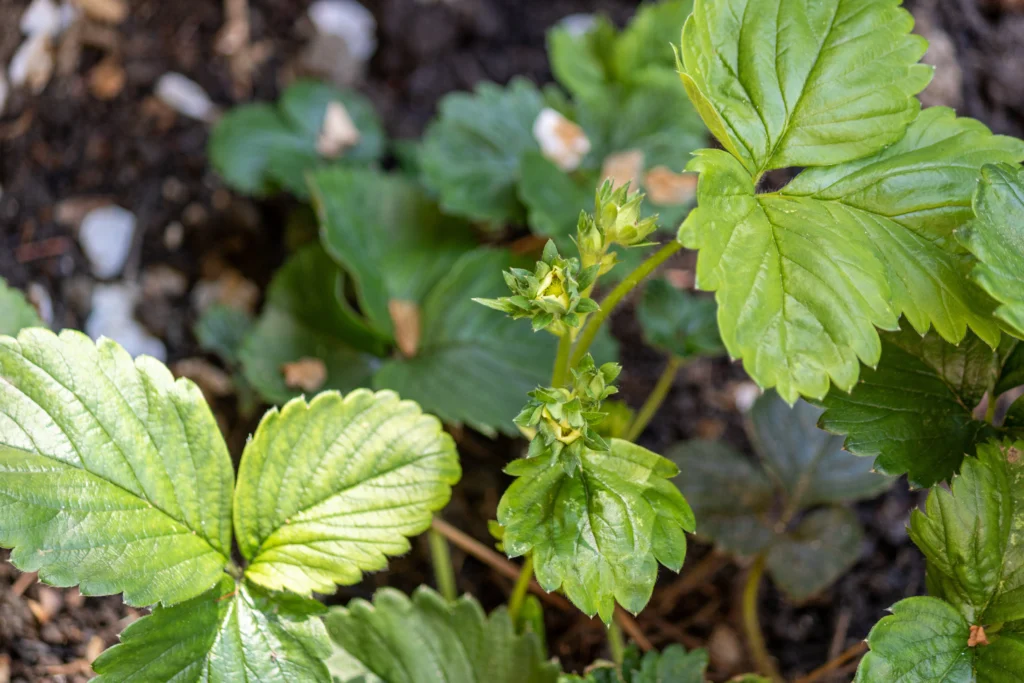
Catmint is a tough perennial that flourishes in full sun and well-drained soil. Its silvery leaves and lavender-blue blooms attract bees while standing up to heat and drought, making it one of the top low-water rooftop plants for adding both color and movement to dry garden spaces.
10. Mexican Feather Grass

Mexican feather grass gives rooftop gardens a lovely look. With little to no watering, this ornamental grass grows well in arid, windy climates. Its feathery, soft appearance sways with the wind, giving any rooftop area a serene, organic feel.
Benefits of Low-Water Plants for Rooftop Gardens
Save More Water:
These plants require minimal watering, making them perfect for rooftops exposed to sun and wind. They help cut water use while keeping your garden vibrant and green.
Perfect for Strong Sunlight:
Full sun and dry air are ideal for low-water plants. They can withstand harsh temperatures because of their deep roots and thick leaves, which retain moisture.
Low Maintenance & Cost-Effective:
Less-water Rooftop plants thrive with minimal care—no daily watering or constant pruning. They save time, reduce effort, and help you cut down on long-term water and maintenance costs.
Protect Rooftop Surfaces:
Low-water plants provide a natural defense against wind and heat. Their roots stabilize the soil, lower the surface temperature, and prevent premature deterioration or cracking of rooftop materials
How to Design a Rooftop Garden for Dry Climates
Selecting the right plants is only half the work; maintaining a healthy and water-efficient rooftop garden depends heavily on its layout and design. Here are some tips for growing a successful garden:
Use Lightweight Containers
Pick planters made of lightweight materials like fiberglass or resin. They reduce rooftop load while retaining enough moisture for plants.
Add Mulch
A layer of mulch helps retain soil moisture, keeps roots cool, and reduces evaporation—essential for dry climates.
Install a Drip Irrigation System
Even low-water plants need occasional watering. Drip systems ensure water reaches the roots directly, minimizing waste.
Choose Reflective Surfaces
Using light-colored containers or paving materials can help reduce heat buildup around your plants.
Collect Rainwater
Set up a small rainwater harvesting system to reuse natural water whenever possible—it’s eco-friendly and saves money.
Maintenance Tips for Low-Water Rooftop Gardens
- Water Smartly: Deep watering once every week is better than frequent shallow watering.
- Prune Regularly: Removing dead leaves helps plants direct energy to new growth.
- Feed Sparingly: Use organic fertilizers only when necessary; drought-tolerant plants prefer lean soil.
- Inspect for Pests: Even hardy plants can attract pests during dry seasons—check undersides of leaves regularly.
- Rotate Plants: Occasionally move pots around to balance sun exposure across your garden.
Creating a rooftop garden in a dry region is easier than it seems.
By choosing low-water plants for rooftop gardens in dry climates, such as agave, sedum, lavender, and rosemary, you can design a space that’s both stunning and sustainable.
Read more related articles > https://www.climatechallange.com/8-best-drought-tolerant-plants-for-low-water-landscapes/
FAQs
Q1. How often should I water drought-tolerant rooftop plants?
Ans. Once every 7–10 days is usually enough. Always check the soil—if it feels dry two inches deep, it’s time to water.
Q2. What plants are good for rooftop gardens?
Ans. Many commercial landscapers favor succulents—especially nonnative Sedums—because rooftops experience high evaporation and transpiration from sun and wind. Prairie plants adapted to dry soil can also work well, particularly those with shorter root systems.
Q3. What type of soil is best for rooftop gardens in dry climates?
Ans. Make use of a soil mixture that drains well & contains small gravel, perlite, or sand. This helps the roots breathe & avoids waterlogging while retaining enough moisture for the plants.
Q4. Can rooftop gardens really survive without daily watering?
Ans. With the right drought-tolerant plants and a well-chosen soil mix, your rooftop garden can flourish without daily watering. Adding mulch and using drip irrigation further helps retain moisture for longer.

